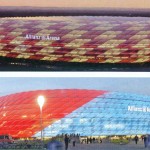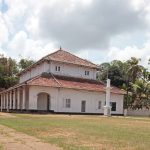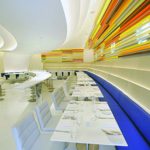By Robert Kronenburg.
Published by Laurence King Publishing Ltd. London. (2007)
Human beings are flexible creatures who originated as a nomadic species. Each day was a new adventure. Life then, was a wholesome journey among mountains, rivers, rain and sun, in which our existence was based on our capacity for movement and adaptability.

We now live in standardised environments, built for apparently standardised people, carrying out standard functions, chosen from speculative builders or designers.
The book “Flexible” is about how flexibility can once again become our mode of survival on the planet we almost destroyed.
Robert Kronenburg of Liverpool School of Architecture has been exploring this topic for two decades and he concludes that flexible architecture consists of buildings that are designed to respond easily to change throughout their lifetime. The benefits of this form of design can be considerable: it remains in use longer; fits its purpose better; accommodates users’ experiences and intervention; takes advantage of technical innovation more readily; and is economically and ecologically more viable. It also has greater potential to remain relevant to cultural and social trends.
The first section of the book deals with an overview of the intermingling agendas of flexible architecture in terms of home, community and architecture.
“Buildings must not be a mass produced industry because unlike cars they have a long and complicated life, during which their parameters of use can change widely. This is how cities change from commercial to residential or industrial to entertainment and back again.”
It is argued that architecture must not be monumental in a sense of imperishability but must include the temporal dimension of the ‘event’ in architecture.
A strategy that solves this issue, with a capacity to accommodate change, is the idea of fluctuating space, where the dedicated functional spaces, are linked with more ambiguous territory – a sort of buffer zone in which many things can happen such as a backstage area of a traditional theatre.
Second part of the book discusses the four characteristics of flexible architecture according to Robert Kronenburg: adaptation, transformation, movability, and interaction.
ADAPT: Architecture that is designed for adaptation recognises that the future is not finite, that change is inevitable, but that framework is an important element in allowing that change to happen.
Adaptable buildings are intended to respond readily to different functions, patterns of use and specific users’ requirements. This adaptability also means longer, more certain returns for the investor, as future change is easily accommodated within the fixed building fabric.
TRANSFORM: Buildings that change shape, space, form or appearance by the physical alteration of their structure, skin or internal surfaces. It is architecture that opens, closes, expands and contracts.
Truly transformable architecture must go far beyond the minimal changes allowed by moving the chairs around or painting the walls. In some cases, particularly in domestic situations, this means the building should be capable of transformation with human power alone.
“The opportunity to affect the image or identity of architecture is a real possibility for transformable design. Though physical transformation is the most potent form of change that a building can go through, it is important to note that highly significant visual transformations can also take place without physical movement such as the dramatic changes of the surface image of architecture.
MOVE: Buildings that relocate from place to place in order to fulfill their function better – it is architecture that rolls, floats, or flies.
This type of architecture can be a Mobile Dwelling Unit (MDU), a ‘demountable’ facility quickly assembled on site, and a system of components based on a ‘modular’ that may be assembled in different ways.
“Movable architecture expands our experience of a place dramatically, helping us to realise our needs and aspirations in an immediate and practical manner and also to add understanding to what a place means by seeing it change.
It can also be there one day and gone the next, allowing us to taste innovative architecture in a way that would not be possible for a permanent building.”
INTERACT: Buildings that are receptive to a user’s requirements in automatic or intuitive ways. It is architecture that uses sensors to initiate changes in appearance and environment or operation that are enabled by kinetic systems and intelligent materials.
“Flexible buildings are intended to respond to changing situations in their use, operation or location. This is architecture that adapts, rather than stagnates; transforms rather than restricts; is motive rather than static; interacts with its users rather than inhibits. It is a design form that is, by its very essence, cross disciplinary and multi-functional.”
Reviewed by
Kanchana Senasingha.















